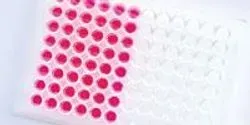Mike May, PhD
Articles by Mike May, PhD

Many labs use chillers to control the cooling needed for some processes. To make the device work, a chiller uses a fluid, and the best kind of fluid depends on a range of factors. Part of the selection process depends on lab preferences. This article explores some of the thinking behind picking one chiller fluid over another.

Nearly every lab or production facility of any sort needs an oven. Moreover, those ovens get used in a wide range of ways. As Uwe Ross, president at Binder in Great River, New York, says, “Oven applications range from prep work to curing to treating to testing.” He adds, “We really find lab ovens in applications from biotech and pharma to heavy-duty material testing.”

More than just surfaces and storage, today’s laboratory casework makes a statement. For one thing, the right casework makes a lab operate more efficiently—putting the right drawers or shelves in the most at-hand places. In addition, casework can even keep track of pieces and parts in a lab. Plus, today’s options in cases—from materials to colors—give scientists an opportunity to create a lab with pizzazz.

Today’s centrifuges are more sophisticated than ever. Consequently, customers can find platforms that fit right into today’s wide range of centrifuge applications. In fact, Nick Horsley, general manager at Hettich Instruments in Beverly, Massachusetts, says, “Centrifuge accessories have become very important.” Those accessories can help a lab select a system that can multitask.

A forensics investigator dusts a crime scene for fingerprints. When she finds one, she reaches to her holster, pulls out a handheld device, and aims it at the fingerprint. The device captures the image and also the chemical composition. That chemical analysis reveals that the person who left the print had touched ephedrine—an illegal drug, which is a stimulant that goes by many street names, including meow. With this information, the investigators can use biometrics—the fingerprint— to identify the person and the chemical analysis to start piecing together the crime.

Life scientists started using microplates in the 1950s, with some of the first ones literally machined from solid blocks of plastic. You don’t need to wander around a molecular biology lab long today to see the progress in microplates, some now including thousands of wells.


















